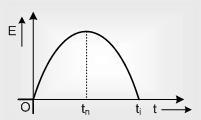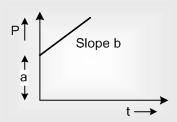Seebeck Effect
Definition: When the two junctions of a thermocouple are maintained at different temperatures, then a current starts flowing through the loop known as thermo electric current. The potential difference between the junctions is called thermo electric emf which is of the order of a few micro-volts per degree temperature difference (µV/°C).
.jpg)
Seebeck Series: The magnitude and direction of thermo emf in a thermocouple depends not only on the temperature difference between the hot and cold junctions but also on the nature of metals constituting the thermocouple.
(i) Seebeck arranged different metals in the decreasing order of their electron density. Few metals forming the series are as below.
Sb, Fe, Cd, Zn, Ag, Au, Cr, Sn, Pb, Hg, Mn, Cu, Pt, Co, Ni, Bi
(ii) Thermo electric emf is directly proportional to the distance between the two metals in series. Farther the metals in the series forming the thermocouple greater is the thermo emf. Thus maximum thermo emf is obtained for Sb-Bi thermo couple
(iii) The current flow at the hot junction of the thermocouple is from the metal occurring later in the series towards that occurring earlier, Thus, in the copper-iron thermocouple the current flows from copper (Cu) to iron (Fe) at the hot junction. This may be remembered easily by the hot coffee.
Variation of thermo emf with temperature: In a thermocouple as the temperature of the hot junction increases keeping the cold junction at constant temperature (say 0°C). The thermo emf increases till it becomes maximum at a certain temperature.

(i) Thermo electric emf is given by the equation E = αβ + 1/2 βt2 where and b are thermo electric constant having units are volt/°C and volt/°C2 respectively (t = temperature of hot junction). For E to be maximum (at t = tn)
dE/dt = 0 i.e., α + β tn = 0 ⇒ – α/β
(ii) The temperature of hot junction at which thermo emf becomes maximum is called neutral temperature (tn). Neutral temperature is constant for a thermocouple (e.g. for Cu-Fe, tn = 270°C)
(iii) Neutral temperature is independent of the temperature of cold junction.
(iv) If temperature of hot junction increases beyond neutral temperature, thermo emf start decreasing and at a particular temperature it becomes zero, on heating slightly further, the direction of emf is reversed. This temperature hot junction is called temperature of inversion (ti).
(v) Relation between tn, ti and tc is tn = ti+tc/2
Thermoelectric power: The rate of change of thermo emf with the change in the temperature of the hot junction is calledthermoelectric power.
It is also given by the slope of parabolic curve representing the variation of thermo emf with temperature of the hot junction, as discussed in previous section.
The thermo electric power (dE/dt) is also called Seebeck coefficient. Differentiating both sides of the equation of thermo emf with respect to t, we have thermoelectric power
P = dE/dt = d/dt (αt + 1/2 βt2)

The equation of the thermoelectric power is of the type y = mx + c, so the graph of thermo electric power is as shown.
Peltier Effect
When current is passed through a junction of two different metals, the heat is either evolved or absorbed at the junction. This effect is known as Peltier effect. It is the reverse of Seebeck effect. (When a positive charge flows from high potential to low potential, it releases energy and when positive charge flows from low potential to high potential it absorbs energy).
Peltier coefficient (p)
Heat absorbed or liberated at the junction is directly proportional to the charge passing through the junction i.e. H ∝ Q ⇒ H = πQ; where p is called Peltier coefficient. It’s unit is J/C or volt.
Peltier coefficient of a junction is the amount of heat absorbed or liberated per sec; When 1 amp of current is passed to the thermo couple.
It is found that π = T dE/dT = T × S; where T is in Kelvin and dE/dT = P = Seebeck coefficient S
Appplication of Peltier Effect
Thermoelectric refrigerator : The working of thermoelectric refrigerator is based on Peltier effect.
